Devil May Cry
Devil May Cry
The series offered a unique perspective that pulled me into its narrative world, blending lush visual storytelling with an intricate mythology that felt both familiar and refreshingly innovative.
The Allure of Striking Visuals
My eyes were immediately captivated by the series' distinctive art style. The animation, rich with shadow and contrast, worked perfectly to evoke an atmosphere of mystery and danger. Every scene was meticulously crafted to highlight the supernatural elements inherent in the series. The use of color and lighting not only underscored the mood of each moment but also served as a symbolic device, delineating the ever-blurring line between good and evil. Watching the characters traverse dimly lit streets and battle forces of chaos was an experience that resonated with my own inner love for gothic imagery and action-driven storytelling.
The Soundscape that Pulled Me In
Beyond the visuals, the auditory experience of Devil May Cry was nothing short of phenomenal. I found the soundtrack to be one of the most memorable aspects of the series. The music, with its combination of aggressive rock tunes and haunting melodies, perfectly punctuated the tension and exhilaration of the narrative. Every battle scene was accompanied by a soundscape that amplified the adrenaline and intensity, while the quieter, even contemplative moments allowed the music to express the inner turmoil of the characters. The thoughtful integration of sound into the story left me with a lasting impression that continues to echo in my mind.
The Chaotic Symphony of Combat
As a fan of action-packed narratives, I was particularly drawn to the dynamic combat sequences that the anime delivered. The fluid animation of every fight scene conveyed a sense of urgency and visceral excitement, keeping me on the edge of my seat throughout the series. The choreography was both daring and precise, showcasing martial prowess combined with supernatural elements that defied logic yet felt perfectly at home within the Devil May Cry universe. I found myself admiring the dedication and creativity that went into designing these battles, which were as much a work of art as they were moments of pure adrenaline.
The Depth of the Characters' Inner Demons
While the action was compelling, it was the character development that truly gave the series its emotional weight. I connected deeply with the internal struggles of the protagonists, who battled not only external demons but internal conflicts as well. The series did not shy away from exploring the complexities of its characters, delving into themes of redemption, guilt, and the never-ending battle between light and darkness. As I followed their journeys, I discovered layers of vulnerability and strength that transformed the typical hero archetype into something far more nuanced and real. The interplay of personal demons and supernatural menace created a narrative that was both cathartic and unsettling.
The Mythic Roots Reimagined
One of the elements that struck me most was the way the series reinterpreted traditional myths and legends. The Devil May Cry anime took familiar motifs from folklore and reshaped them into a narrative that was at once timeless and ultra-modern. This fusion of mythology with contemporary settings provided a rich background that made every encounter feel steeped in history and significance. I appreciated the lore that underpinned the storyline, giving me a sense of participation in an age-old battle between chaotic forces and determined champions. The narrative wove together threads of destiny and free will in a tapestry that felt both preordained and shockingly unpredictable.
The Intricacy of Interpersonal Dynamics
What kept me engrossed in the series were the deep and multifaceted relationships between the characters. Each interaction was layered with subtext and underlying tensions that hinted at past traumas and unresolved conflicts. I found the dialogue to be especially poignant, as it often reflected the internal struggles of the characters and the ideological divides that defined their worldviews. The series explored camaraderie and rivalry in equal measure, offering me a balanced narrative that was as emotionally engaging as it was action-packed. Every conversation, every minor exchange contributed significantly to the overall character arc, making each moment feel vital to the unfolding drama.
Exploring Themes of Redemption and Eternity
The Devil May Cry anime ventured boldly into themes that resonated on a personal level. I was drawn to its exploration of redemption within the context of an eternal struggle. The narrative frequently pondered whether one could ever truly escape the consequences of past actions and if redemption was even possible in a universe governed by destiny. These themes offered a philosophical depth that elevated the series beyond mere spectacle. Through my viewing experience, I was forced to reflect on my own beliefs about fate, personal growth, and the nature of morality. The series invited me to consider that perhaps every character, no matter how flawed, had the capacity for change and self-forgiveness.
The Creative Direction and Storytelling Approach
From the perspective of a seasoned fan, the creative direction behind the Devil May Cry anime impressed me deeply. The story, while rooted in the established lore of the game series, was given new life through inventive narrative choices and a bold departure from conventional storytelling norms. I appreciated the willingness of the creators to take risks, even if it meant deviating from expected tropes. This creative audacity allowed the series to breathe fresh air into familiar territory, offering unexpected plot twists and moments of subtext that kept me questioning and engaged. The narrative structure was a labyrinth of interconnected ideas that rewarded careful observation and critical thinking.
A Personal Reflection on the Supernatural Themes
For me, the supernatural elements of the series were particularly compelling. The Devil May Cry anime achieved a balance between the ethereal and the tangible in a way that resonated with my personal fascination with the occult. The portrayal of otherworldly powers, spectral beings, and cosmic battles evoked emotions that were both awe-inspiring and disquieting. I often found myself pondering the boundary between myth and reality, a duality that the series masterfully navigated. There was a moment when I realized that the very essence of the supernatural was not just to frighten but also to illuminate the hidden depths of the human soul. This interplay of light and darkness was a reminder of the fragile balance that defines existence.
The Pros and Cons I Discovered
Pros of the Devil May Cry anime series:
Innovative animation style that captures the dark aesthetic of the Devil May Cry universe;
Engaging character design that remains true to the game roots;
A riveting and atmospheric soundtrack that enhances the anime experience;
Dynamic action sequences that showcase fluid combat and supernatural abilities;
Intriguing narrative that melds mythology with modern storytelling;
Rich world-building that ties the anime to a larger, iconic lore;
Emotional depth in exploring themes of redemption, fate, and personal growth;
Cons of the Devil May Cry anime series:
At times, the narrative can feel overly linear, reducing the complexity of its underlying mythology;
The focus on visual style occasionally overshadows deeper character development;
There are moments when the pacing falters, with certain segments feeling rushed despite the intricate setup;
Immersing in the Complexity of Layered Storytelling
As I dove deeper into the series, I discovered a labyrinth of plot threads that intertwined to form a tapestry of layered storytelling. The narrative was not simply a linear progression from one battle to the next but an elaborate interweaving of subplots that enriched the world around me. I found that each character carried with them vestiges of past stories, secret ambitions, and conflicting loyalties that contributed to an overall sense of depth and realism. The showrunners were adept at balancing flashbacks, present conflicts, and mythological undertones, ensuring that no single element dominated the narrative. This intricate web of details provided ample fodder for reflection and re-watching, making every viewing a new opportunity to notice subtle connections.
Experiencing the Emotional Spectrum
The emotional journey offered by Devil May Cry was as varied as it was intense. From heart-pounding action sequences to moments of introspective solitude, I experienced a broad spectrum of emotions throughout the series. At times, the relentless pace of battles left my heart racing, while quieter scenes allowed me to connect with the inner struggles of the characters. I felt as if the series had an uncanny ability to speak to the pain and hope that exists within every human experience. The emotional layers were further accentuated by thoughtful character arcs, which showed not only their evolution in power but also the transformation of their inner selves. This duality of emotion and action created a resonance that extended far beyond the screen.
Diving into the Arcane Symbolism
The use of symbolism was another aspect that profoundly impacted my viewing experience. Every visual motif, from the recurring imagery of fire and shadows to the nuanced color gradients that signified shifts in mood, was imbued with meaning. I found it fascinating how simple elements were elevated to represent complex themes such as the struggle for identity, the inevitability of change, and the duality of existence. The deliberate choices made by the creators in deploying these symbols not only enhanced the narrative but also invited me to engage with the story on an intellectual level. By decoding the layers of symbolism, I felt that I was gaining insight into a hidden language that spoke of destiny and transformation.
Embracing the Religious and Mythical Influences
Another compelling layer of the series was its integration of religious and mythical influences. I was particularly intrigued by the way the narrative incorporated elements from various mythologies and lore. The demonology, the undercurrents of prophecy, and even hints of divine intervention provided a complex backdrop that enriched the plot. These elements were not presented merely for shock value; instead, they served to elevate the ideological debate between order and chaos within the narrative. I could not help but appreciate the careful research and creative liberties that merged historical myth with contemporary storytelling, making every episode a commentary on the eternal struggle that lies beneath the veneer of modern civilization.
Reveling in the Unpredictable Narrative Twists
Perhaps one of the most enthralling aspects of Devil May Cry was the sheer unpredictability of its storyline. High stakes and unexpected twists kept me guessing at every turn. I experienced shocks and surprises that defied conventional narrative expectations, compelling me to re-examine each episode for hidden clues. The unpredictability added a layer of engagement that made each viewing feel like a fresh adventure, where nothing was ever taken for granted. I found that even as certain narrative patterns began to emerge, the series continually subverted expectations in ways that were both thrilling and intellectually stimulating. This constant shift in the narrative kept my enthusiasm burning bright, ensuring that the experience remained ever-evolving.
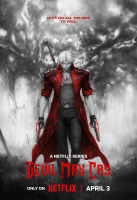

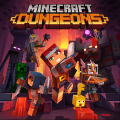



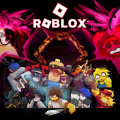



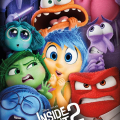

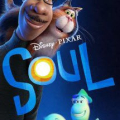
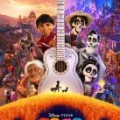


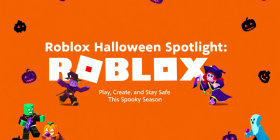
Leave a comment
Your comment is awaiting moderation. We save your draft here
0 Comments